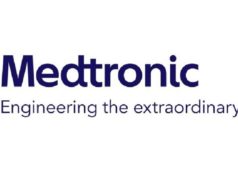Non-invasive brain stimulation and physical therapy—alone or in combination—improve some measures of walking ability in patients with Parkinson’s disease, concludes a clinical trial in the American Journal of Physical Medicine & Rehabilitation, the official journal of the Association of Academic Physiatrists.
Transcranial direct current stimulation and physical therapy “could be used alone or together as a combination treatment protocol to improve walking speed and step length among patients with Parkinson’s disease,” according to the study by Krisna Piravej, and colleagues of King Chulalongkorn Memorial Hospital, Bangkok, Thailand. In addition to showing a benefit of brain stimulation, the results suggest that physical therapy has benefits beyond symptom relief for patients with Parkinson’s disease.
The study included 60 patients, average age 65 years, with slow walking speed due to stage 2 or 3 Parkinson’s disease. Patients were randomly assigned to three groups. One group received a non-invasive brain stimulation technique called transcranial direct current stimulation (tDCS). This procedure delivers a mild electrical current through the brain, with the goal of stimulating neural networks involved in motor coordination. Patients received a total of six 30-minute tDCS sessions over two weeks.
Another group received a physical therapy programme, focusing on joint range of motion and flexibility, leg muscle strengthening, and balance and gait training. The third group received both tDCS and physical therapy. Using a computerised motion capture system, the researchers performed gait analysis to assess walking speed and other characteristics before and after treatment. Fifty-three patients completed the study.
The three groups had similar and significant improvement in some measures of gait. Walking speed increased by an average of about 19%, with only minor differences between groups. Step length increased by approximately 12%. Both improvements lasted for at least eight weeks after the end of treatment.
Other gait measurements—step width and cadence—showed little or no change. All groups also had a small improvement in scores on a standard Parkinson’s disease rating scale, although the clinical relevance of this change was unclear.
Slow walking is a disabling problem for patients with Parkinson’s disease. Deep brain stimulation is an effective treatment for slow walking and other manifestations of Parkinson’s disease. However, its use is limited by the risk of potentially severe complications due surgery to place brain electrodes.
As a non-invasive, nonsurgical procedure, tDCS avoids these risks. Electrical stimulation is delivered via electrodes placed on the scalp. In the study, a few patients experienced a burning sensation during tDCS; otherwise, there were no complications.
While physical therapy has been used to treat symptoms in patients with Parkinson’s disease, it has not been regarded as a standard treatment. The new study adds to previous evidence that physical therapy targeting joint motion, flexibility, muscle strength, cardiovascular fitness, and balance can improve problems with gait abnormality in patients with Parkinson’s disease.
“Our study demonstrated that both tDCS and physical therapy are effective in improving the walking ability in patients with Parkinson’s disease,” Piravej and coauthors conclude. “A combination of the treatments did not demonstrate a significantly better outcome.” They suggest that physical therapy could provide an alternative in “resource limited” settings without access to tDCS. In the future, the ability to provide “patient-specific stimulation” tDCS at home could offer additional advantages.













